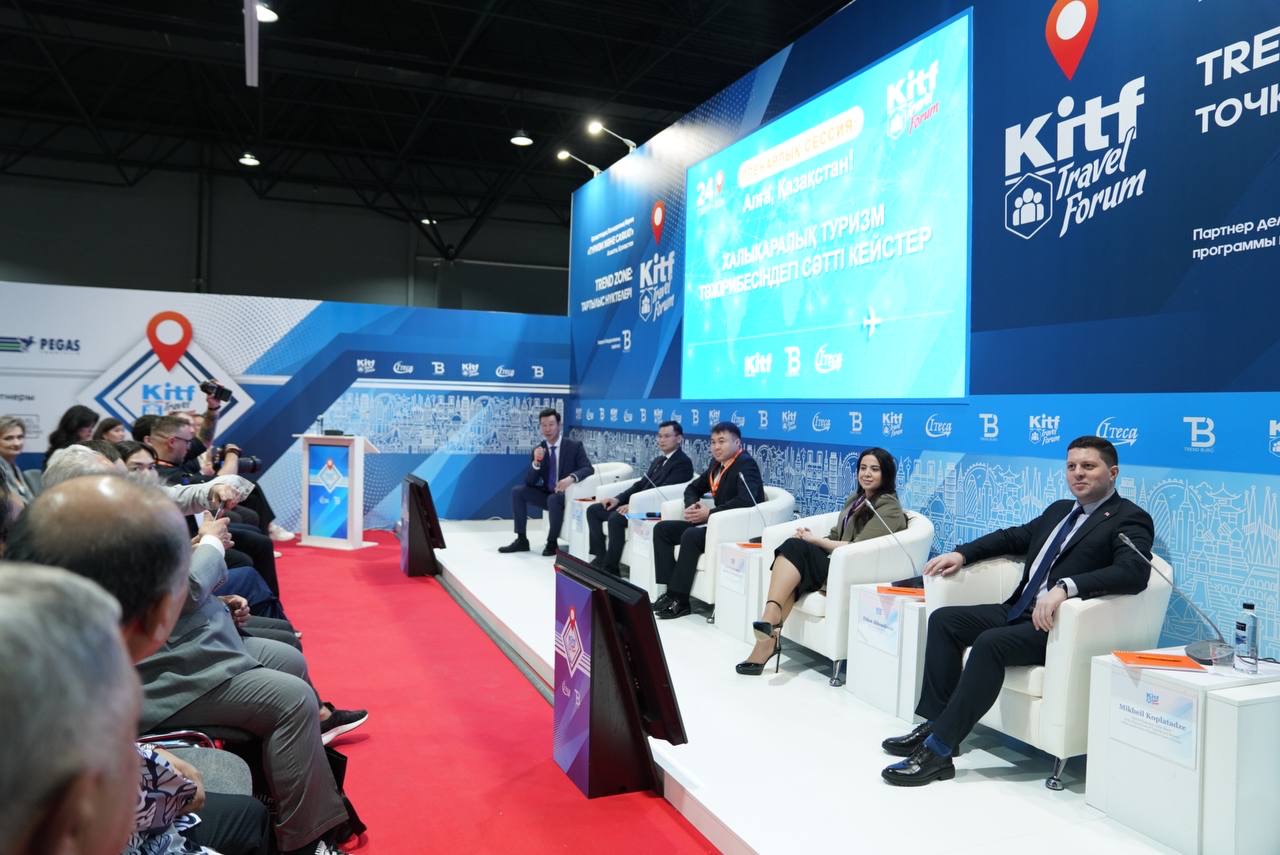ASTANA – Almaty hosted the 22nd Kazakhstan International Exhibition Tourism and Travel (KITF) from April 24 to 26, serving as a wide-ranging professional platform for the tourism industry of Central Asia. The exhibition commenced with a plenary session featuring tourism industry experts’ insights from Azerbaijan, Georgia, Kazakhstan, the Kyrgyz Republic, and Uzbekistan.

Plenary session “Successful cases in international tourism practice”. Photo credit: kitf.kz
This year’s event gathered 406 companies from 28 countries. Exhibitors include tour operators and travel agencies, air companies and air travel agencies, national and regional tourism organizations, hotel services providers, healthcare and medical centers, IT developers and international real estate organizations.
The program for KITF 2024 included sessions led by industry experts analyzing trends for the year, marketing and commerce of the aviation industry, successful cases in international tourism, influence marketing, the introduction of new destinations and travel approaches, as well as presentations and partner meetings.
During the plenary session on April 25, the experts exchanged experiences and recommendations for mutual support.

Partner meetings at the KITF Exhibition 2024. Photo credit: kitf.kz
In a proposal for joint promotion between Kazakhstan and Azerbaijan, Fidan Akhundzade, the head of the Sector for Cooperation with CIS (The Commonwealth of Independent States) and Asian Countries of the Azerbaijan Tourism Bureau, suggested advertising each other’s travel products in priority markets such as China, India, and GCC (Gulf Cooperation Council) countries, and targeting advertising efforts within the celebration of the common Turkic holiday of Nowruz.
However, Mikhail Koplataze, the deputy chairman of the Board of the Department of Tourism and Resorts of the Autonomous Republic of Adjara in Georgia, notes the importance of diversifying markets and advertising not only in existing target markets but also in new ones to achieve long-term results.
Among the ongoing cooperative efforts, Kazakhstan and Uzbekistan are collaborating on mutual acceptance of visa-free countries lists to enhance the convenience of foreign tourists crossing joint borders, noted Saidikram Niyazkhodzhaev, Uzbek Ambassador to Kazakhstan.
With many foreign tourists visiting Central Asia countries through Kazakhstan, Kudret Taichabarov, the president of the Tourism Development Support Fund in the Kyrgyz Republic, proposed increasing the capacity of Almaty International Airport to influence the overall number of arrivals and specify the purpose of the visit when crossing the border to acquire more accurate tourism inflow statistics.
One indicator reflecting the states’ prioritization of the tourism industry is the number of people employed in the sector.
According to Kairat Sadvakassov, the chairman of the Kazakh Tourism national company, the tourism industry in Kazakhstan, including its regions, employs 200 individuals. By comparison, the tourism sector in the Kyrgyz Republic employs 300 people, Adjara in Georgia has 500 employees, excluding other regions, and Azerbaijan, including government agencies and subordinate institutions, employs 2,000 people.
Despite the relatively small number of employees in the public sector compared to Kazakhstan’s neighbors and limited funding, Sadvakassov agrees with Koplataze that the effect of any tourism efforts is visible after several years.
All speakers noted that hospitality, shared history, Turkic roots, and mutual communication will unite them to attract international tourists.

